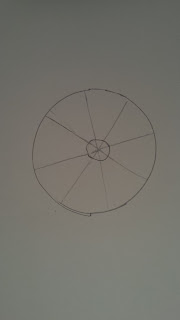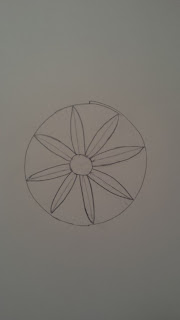"Radial or Rotational balance is any type of balance based on a circle with its design extending from or focused upon its center" (Holmes 62). This term was like a part of a foreign language to me, and the technique itself newer. While the idea of it seemed helpful it was difficult for me to do in a rush. When it comes to drawing, I'm a perfectionist and at the moment I had nothing to make the perfect circle or have perfect lines. It was hell on Earth for me.
 |
| Okay not hell but it was very frustrating! |
 |
| Then I used the lines as guidance for the petals |
The result wasn't great. The object failed to have rotational symmetry which Holmes described as "an object that looks the same after a certain amount of circular movement around that objects center"(62). After sketching the daisy I shaded and added the stem.
I wasn't completely satisfied with my drawing but I was till able to learn a new technique. Did you already know about rotational balance? What other objects might this be useful for?



0 comments:
Post a Comment